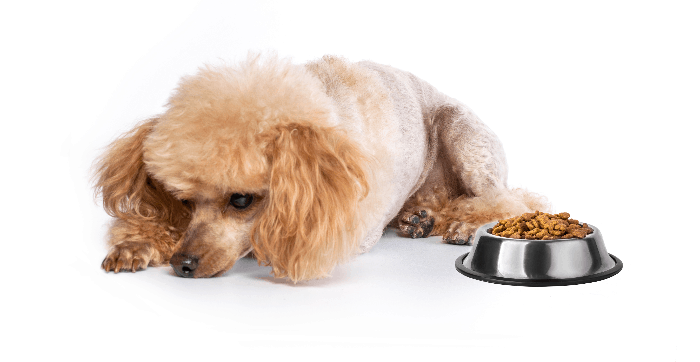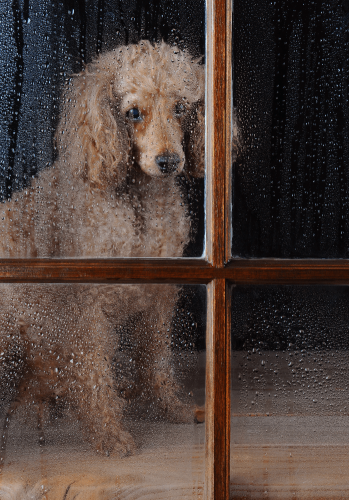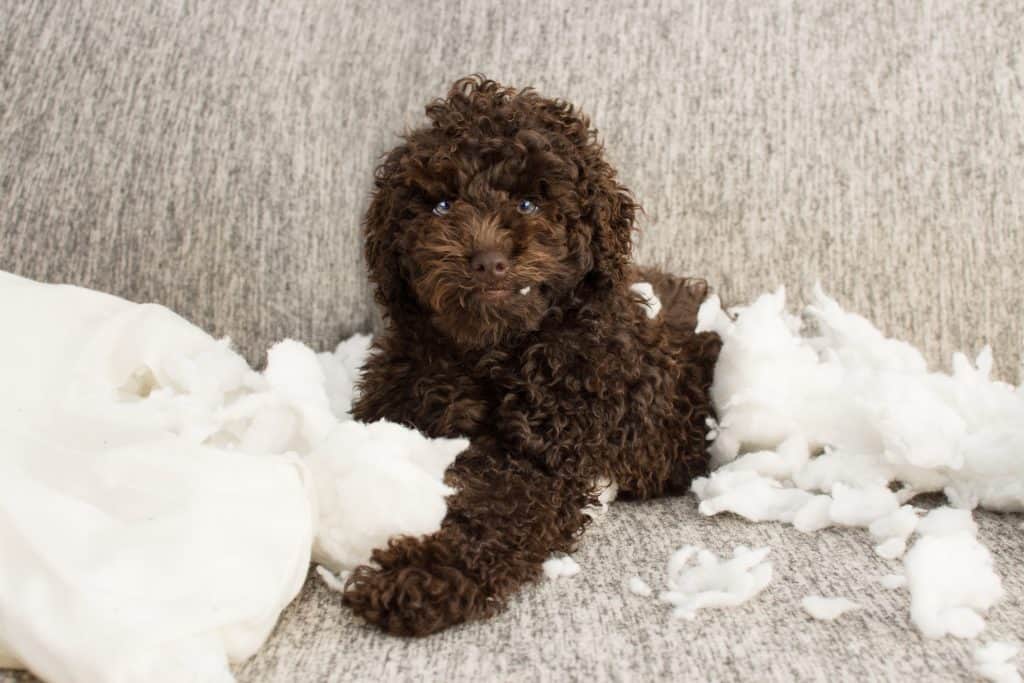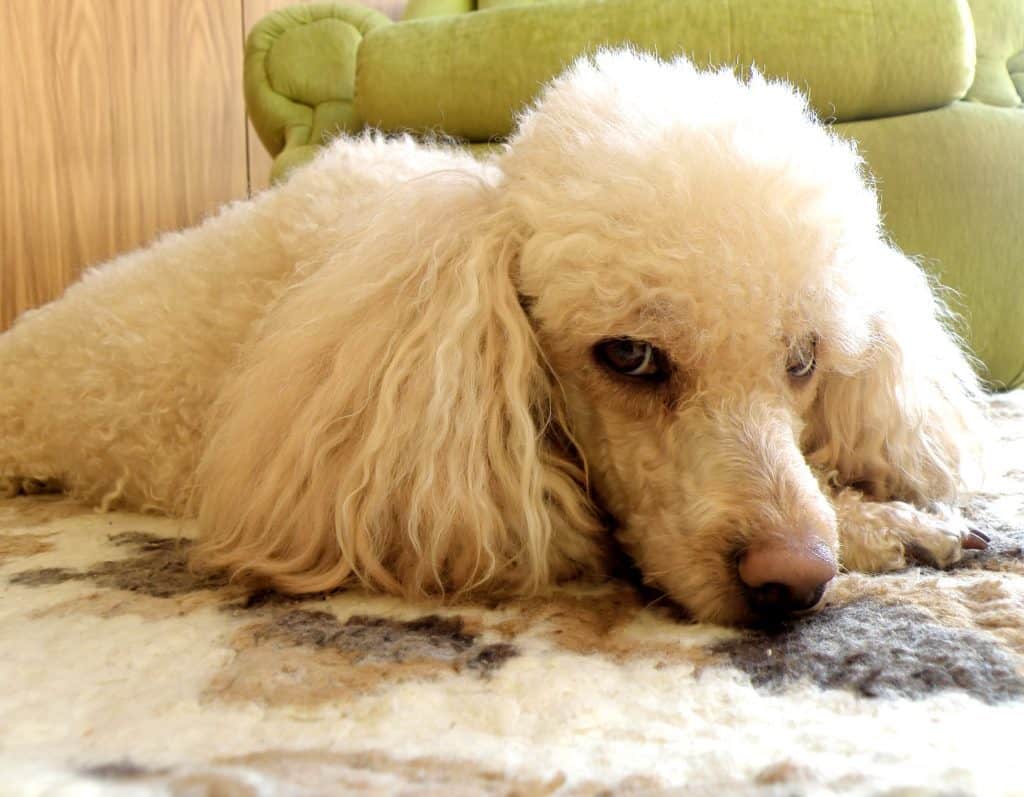Poodle Separation Anxiety is a high-stress topic. Typically, it is stressful for the poodle in question as well as the owner. Plainly put, Separation anxiety is the term that is used to describe a dog that has a problem with being alone and cannot handle it. Whether the dog is left alone for 5 minutes to 8 hours they have trouble coping on an emotional level.
While this is something that can happen to poodles at any age. you will often find that puppies often have trouble. Typically, they outgrow it. This can also occur in older poodles as well even it has not been an issue in the past.
Signs that your Poodle Has Separation Anxiety
There are many ways for your poodle to show signs of separation anxiety. A dog with separation anxiety can exhibit as few as one or several behaviors. The following are the most common signs:
- Whining/Crying
- Incessant barking
- Destructive behavior
- Increased accidents even when housebroken
- Depression
How to Help your Dog with Separation Anxiety

The good news is that there are many things that you can to help alleviate this issue and help your poodle cope with being home alone.
It’s important to be mindful of how old your poodle is in relation to how long you can leave him or her home alone. This is also taking into consideration how long your dog can go without having to be let outside, etc.
- 1 hour for every month of age
- At one year of age, a poodle can wait to go relieve themselves for about 8-9 hours
Let’s face it, most owners are not able to stay at home with their poodle for the first year. Having said that, there are a number of things that poodle owners can do to ensure that their dog is comfortable while they are away for extended periods if a dog walker is not a viable option.
Create a Designated Area
When you have a puppy, it is important to start training them right away and this includes potty training. Creating an area for your puppy to stay during the day that allows them to relieve themselves and eat in separate areas is important.
One of the best ways to do this is to purchase a puppy exercise and playpen. Inside of the playpen, you’ll want to have their crate, water, food, puppy pads, and toys. You’ll want to keep the water and food on one side of the play pin and the puppy pads as far away as possible from the crate and food.
You’ll want to clean the puppy pad area often and begin potty training as often as possible while you are home.
Creating a comfortable environment for your poodle from the very beginning is one of the best ways to reduce the chance of separation anxiety.
Leave on Television or Radio
Leaving on the television or radio for your poodle while you are away is a great way to keep your dog calm. Whether they are a puppy or a little older, having something on in the background can provide a bit of comfort. In some ways, it will make your dog feel that someone is still home and nearby.
You will want to be sure that if you do leave on the TV or radio that it will not play any loud or jarring music or sound effects.
Tips for When you Leave and Arrive Home
Leaving Poodle Alone

In this section, you will find one of the best ways to reduce separation anxiety with your poodle. One of the most common mistakes that many dog owners make is completely by accident.
From a young age, many of us are so used to following a ritual before we leave home. We announce that we are leaving and we hug and kiss anyone nearby that we can get our hands on. For our human counterparts, this isn’t a big deal. However, it can create a lot of panic and uneasiness for your poodle.
Many poodle owners like to hug, kiss and pet their pup before leaving. We just can’t help it, as humans we really love our dogs and we want to tell them goodbye before we leave because we will undoubtedly miss them.
When we do this, however, our dogs are wondering “Is my owner ever coming back? This must be a really big deal since they are hugging, kissing and petting me so much before they leave!”
As a result, this can create quite a bit of panic and anxiety for your poodle.
It may seem odd, but you must actually do the complete opposite. When you leave the house you must stay calm and act as nothing is wrong. While it can certainly be difficult at first you must resist the temptation to give in to your “ritual”. Doing so will ensure that your poodle will remain confident and calm while you are away.
About an hour or so before heading out it is perfectly fine to play with your dog, hug, kiss, brush and pet your dog to your heart’s content. You’ll want to ensure that you have given them food and water well ahead of time before leaving as well. Ensure that they have plenty of toys to keep them occupied. You will also want to take your dog outside at least 30 minutes before you leave.
Before you leave the house you will want to take them to the area you allow them to stay in while you are away. Generally an enclosed area or a properly sized crate. You will want to stay calm and continue getting ready as if nothing out of the ordinary is going on. If your poodle becomes agitated during this time, it is ok to toss their favorite toy to them. Most importantly, you will want to do all of this without saying a word. When it’s time for you to leave simply exit your home without a peep. Keep in mind that even if you say something like “See you later boy” it can create a pattern that will trigger anxiety and panic in your dog.
While this may seem to be absolutely against your natural instincts, trust and believe that this is going to have a huge impact on reducing your dog’s separation anxiety. Over time, your dog will be able to cope much easier with being left alone while you are away.
Arriving Home to Poodle
When dog owners return home, again there is often a similar ritual to when they leave. There is the announcement that you’re home, overexcited to see your dog, hugging, kissing and petting them, etc.
In order to ensure that you’re dog doesn’t view your leaving and returning home as a big event the key here again is very similar to when you leave the house. When you arrive home you will want to simply enter the home calmly and quietly. You’ll want to remove your jacket, check the mail, take off your shoes, etc before acknowledging your dog. You’ll want to completely ignore them for about 5-10 minutes. You don’t want to pet them, hug them, say hello or anything. After that time has passed then it is completely ok to give them all the attention in the world.
What this will do is ensure that your dog views you entering and exiting the home as just a normal part of life. It isn’t a big deal and you always come back.
If there are other people in your household ensure that everyone is on the same page about entering and exiting the home. If not, you will find that your poodle has just as much anxiety as they did before you started your new routine.

Side Note: One other thing to keep in mind is that if you are in the process of potty training your dog, it may be a good idea to look into getting a dog walker. I know, I know, you may be concerned with the cost. However, it is not nearly as expensive as you may think. In addition, if you have a friend, neighbor or local teenager that won’t mind earning a few dollars they could be a great option. Not only will it help with potty training but a bit of exercise will also go a long way in reducing your dog’s stress and anxiety.
Away for Long Periods or Overnight
When your dog suffers from separation anxiety, being away for long periods or overnight can be a very stressful situation for them. While your poodle will without a doubt, be fine overnight by themselves (provided they have ample food and water) the stress on your dog isn’t worth it.
It is highly recommended that you have a friend, family member or even dog sitter watch your poodle if you will be away longer than the average workday (8-9 hours).
If for some reason you aren’t able to get someone else to watch them, pet hotels are also good options. Boarding kennels should be avoided at all costs and only considered if no other viable option exists.



